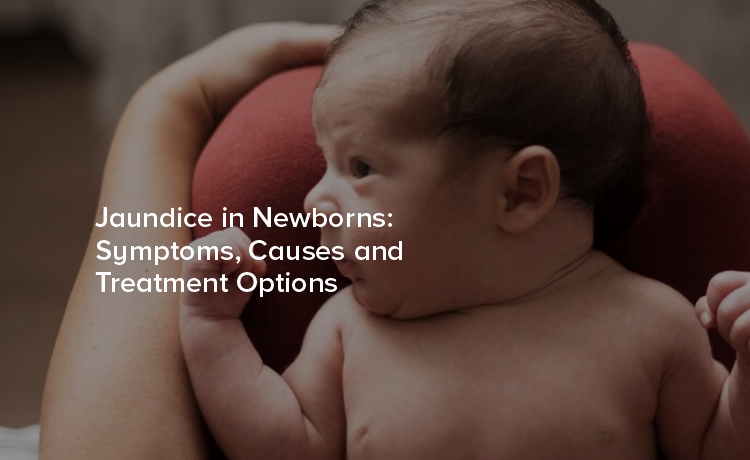
Bringing a newborn home is a joyous occasion, but it can also bring concerns, especially if your baby develops a yellowish tinge. This condition, known as jaundice, is common in newborns and can cause anxiety for new parents
Jaundice is a condition characterized by the yellowing of a newborn's skin and eyes. It occurs when there is an excess of bilirubin in the baby's blood. Bilirubin is a yellow pigment that is produced during the normal breakdown of red blood cells. In newborns, their liver isn't fully developed, so it can't efficiently get rid of bilirubin. This leads to jaundice.
Many newborns experience jaundice due to their immature liver function. In fact, about 60% of term newborns and 80% of preterm infants show signs of jaundice within the first week of life. The liver's inability to process bilirubin quickly enough results in its buildup, causing the yellow discoloration.
To identify jaundice, examine your baby's skin, eyes, and gums. The yellowing typically starts at the head and moves down the body. Most often, jaundice appears between the second and fourth day after birth. If you press gently on your baby's forehead or nose and see a yellow color, it might be jaundice.
1. Physiological Jaundice
Physiological jaundice is the most common type and occurs naturally. It happens because the newborn's liver is still maturing and may not break down bilirubin efficiently. Typically, physiological jaundice resolves on its own within two weeks without any intervention.
2. Pathological Jaundice
Pathological jaundice arises from underlying health issues. It can result from blood type mismatches between mother and baby, infections, or liver malfunctions. Unlike physiological jaundice, pathological jaundice may appear within the first 24 hours after birth and requires medical attention.
3. Breastfeeding and Breast Milk Jaundice
Breastfeeding jaundice is linked to inadequate milk intake, leading to dehydration and elevated bilirubin levels. On the other hand, breast milk jaundice occurs due to substances in the mother's milk that interfere with bilirubin processing. Both conditions are usually temporary and manageable with proper guidance.
1. Checking Bilirubin Levels
Healthcare providers use a blood test or a non-invasive skin test to measure bilirubin levels. It's crucial to monitor these levels to decide if treatment is necessary. Frequent checks help ensure that bilirubin levels don't reach a point where they could cause complications.
Certain factors increase the likelihood of jaundice, such as prematurity infection, a different blood type than the mother, or a sibling with jaundice. Identifying these risk factors helps healthcare providers keep a close watch on at-risk infants and intervene early if needed.
Parents should note if the jaundice spreads beyond the baby's face and chest or if it persists longer than two weeks. Keeping an eye on these developments allows caregivers to assess whether the condition is improving or if further evaluation is needed.
Phototherapy
Phototherapy is a common and effective treatment for reducing bilirubin levels. The baby is placed under a special blue light, which alters the structure of bilirubin molecules, allowing the body to eliminate them more easily. This non-invasive method is safe and widely used.
Exchange Transfusion
In severe cases, where bilirubin levels are dangerously high, an exchange transfusion might be necessary. This procedure involves replacing the infant's blood with fresh donor blood to rapidly decrease bilirubin levels. It's a rare treatment, reserved for critical situations.
Ensuring Adequate Feeding
Regular feeding is essential for preventing and treating jaundice. It helps to increase the baby's bowel movements, facilitating bilirubin excretion. Breastfeeding or formula feeding every 2 to 3 hours encourages this natural process and supports the baby's overall health.
1. Recognizing Alarming Signs
Parents should seek immediate medical help if their baby shows signs of extreme lethargy, poor feeding, or a sudden spike in jaundice intensity. These symptoms could indicate severe jaundice or other health concerns requiring urgent intervention.
2. Consulting Healthcare Professionals
Regular check-ups with a pediatrician are vital for monitoring jaundice. They can provide reassurance, track progress, and suggest interventions if needed. Open communication with healthcare providers ensures timely care and peace of mind for parents.
Please attend follow Up’s with your paediatrician as advised after discharge with fail.
Untreated severe jaundice can lead to serious complications, including kernicterus, a type of brain damage. These children can develop
However, with appropriate monitoring and treatment, the risk of long-term effects is minimal. Early detection and management are key to preventing complications.
While sunlight helps reduce bilirubin levels, it's not a substitute for medical treatment. Direct sunlight exposure can harm a newborn's sensitive skin. Medical guidance ensures safe and effective treatment methods are used instead.
Supporting Parents Through the Jaundice Journey
For new parents, dealing with jaundice can be overwhelming. Offering emotional support and reassuring them that jaundice is common and manageable can make a significant difference in their experience.
Providing informative resources empowers parents to understand jaundice better. Knowledge equips them to recognize symptoms, seek appropriate care, and feel more in control of their baby's health.
Connecting parents with others experiencing similar challenges creates a sense of community. Support groups and online forums offer a space to share experiences, ask questions, and receive encouragement from those who have been through it.
Jaundice in newborns, while common, can be daunting for parents. Understanding its causes, symptoms and treatment options is crucial for safe effective management. Neglecting jaundice after birth can lead to bilirubin in phototherapy which can cause permanent brain damage.